WHEN the fuel consumption figures are updated each week for our long-term test fleet, I always have a little flinch when I look at those for my car – my figure is often worse than for the driver before me.
The Fleet News office is split into two distinct camps – the lightfoots who pride themselves on achieving the most economical motoring they can, dripping thimblefuls of fuel into the cylinders one at a time and the clodhoppers who, through extensive use of a heavy right foot, seem to be able to drop fuel consumption averages quicker than Pop Idol judges dropping screeching wannabes.
I am ashamed to admit I'm in the second group, so it seemed a good idea when the offer came up to attend an economy driving course to learn various techniques that can be used in everyday driving to improve fuel consumption.
So, now to choose a car suitable for such an endeavour. Step forward the Subaru Impreza WRX STi with Prodrive Performance Pack. Barking acceleration, 300-plus bhp, gearing shorter than Glenn Hoddle's football season, stonking great turbo, four-wheel drive and a masochistic attitude that is begging for a thrashing. Improving the fuel economy of this car from its combined 25.4mpg figure will be a real accomplishment.
I had my reservations about the course because the term 'economical driving' suggests to me tootling along at 20mph below any given speed limit, which firstly doesn't sound any fun and secondly, seems more of a hindrance than a help. But I was to be pleasantly surprised.
I enlisted the help of Kelvin Bullen from Peak Performance to go through the firm's Econodrive training course. Peak reckons it can improve the fuel economy of fleets by up to 15%, just through an improvement in driving habits.
First up comes the ubiquitous vehicle check, because under-inflated tyres or running with low oil will impact considerably on fuel consumption and wear rates.
Another consideration is loading. Many cars are full of all sorts of unnecessary bags or equipment which have an impact on fuel consumption and increase wear and tear. But on to the road, the Impreza proves problematic. How will I be able to improve its fuel economy when with a twitch of my big toe, the needle on the rev counter leaps to 4,000rpm?
I'm assured by Bullen that crawling along at Auntie Vera velocity is not going to be the main component of the course. Instead, picking a speed and sticking to it is the order of the day. That sounds like more fun.
The secret of saving fuel is overcoming kinetic energy, according to Bullen. The more you can keep a car rolling at its current momentum, the less work the engine has to do. On a motorway or dual carriageway, this means keeping your distance from other traffic and reading what's happening ahead so that you do not vary speeds wildly, but adjust them minimally to allow obstacles to clear a long way in front of you and leave you to continue at the same speed.
Bizarrely, this is quite enjoyable, trying to read the road ahead and keep moving. Dare I say it, but you can actually make a game of it – seeing how long you can stick at your desired speed without having to brake or slow down.
It's quite easy to spot the people who aren't driving efficiently. They hurtle up behind you at high speed, brake sharply and sit on your tail. As you pull over, they accelerate past, steam up to the car in front and brake again.
All this speed rollercoaster does is use fuel – and you get there just as quickly by maintaining distance and patience.
Pairs of lorries on dual carriageways are also worth looking out for, especially as the following one gets close up behind the other on a hill – it means the second driver reckons he has a chance of crawling past as the heavier lorry in front drops off its 56mph restricted speed limit. So it's worth hanging back, slowing gently and letting them do their thing. Screaming up behind muttering obscenities only means you have to slow and then accelerate again, wasting valuable fuel.
And it is worth following the lorry driver's example in other ways. Bullen reckons they will do anything to keep moving in a bid to save fuel and it's a trick a driver can follow, whether it be approaching lights and crawling up behind traffic, or timing your run at a roundabout, so you can change gear from top to second or third in one change and keep going.
Even a slow crawl is better than coming to a complete halt and having to thirstily get all that weight moving again.
Oddly, the Subaru was fantastic at this. In sixth gear, this supercar would drop to less than 1,000rpm with no grumbling thanks to a superb engine management system, then a quick change into third and there was enough pulling power to get away from any roundabout junction at creeping speed. It couldn't have been easier in a diesel family car.
Bullen recommends only one gearchange if possible at roundabouts. He contends that the old days of having to use the engine to slow a car down as well as the brakes is long gone. Modern brake systems should be more than adequate in most situations.
According to Peak, with up to 75% of a car's weight transferred to the front wheels under heavy braking, being more progressive will also help wear rates on the tyres. I continued into town. I tried to not stop moving to the morning shopping traffic in Huntingdon – and I can assure you that was much more difficult.
Once back out on the open road, we looked at techniques for maintaining speed on A and B roads, and I was pleased to discover that many of the lessons taught on the racetrack apply on the road.
This may sound perverse, but bear with me.
Track driving is about smooth progress and so is driving economically. Maintaining speed through a corner causes less stress on the engine and acceleration after the bend should be left until the wheels on the car are being straightened up.
Pushing the throttle before that means the tyre is trying to turn the corner while also trying to go forward and this means friction – and friction is one of fuel consumption's greatest enemies.
Also, as on a racetrack, one turn of the steering wheel for the constant radius of the bend is desirable. Two or three turns per bend just scrubs the tyres against the road, causing more friction.
But maintaining speed through a bend means knowing what speed to go through it in the first place.
Many drivers will enter a corner too quickly and will be forced to brake, scrubbing off speed and using fuel to get going again. Peak teaches 'limit point analysis', in which the driver uses the perspective and the point at which the bend disappears to guarantee the car is at the right speed for the turn.
Basically (and this takes plenty of practice to get right), if the point of perspective at which the near and off sides of the road meet is moving away from you, you are going too slowly.
If you are going too fast, that limit point will be coming towards you. If it is travelling at the same speed as the car, you're about right.
Sounds simple, but it isn't. However, when it works and you get it right, you feel very smug and also rather clever.
Having spent the morning on the course, it has to be said that I'm now less demanding of my fuel tank. The Subaru went from 23mpg before to about 26mpg after the lesson, and I didn't have to drive like Auntie Vera to get it there.
Fuel efficiency might not be the Subaru's real skill and sending it back to the press office having improved its fuel economy might be a little like having a date with Jordan and deciding to go to a flower arranging demonstration, but it proved that even the most fearsome pieces of kit can be driven more efficiently and enjoyably. Steve Moody



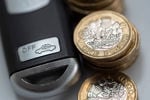



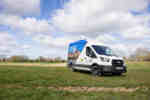




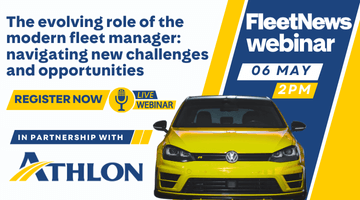
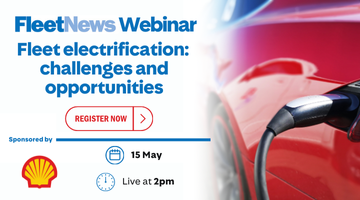
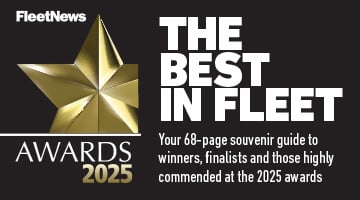

Login to comment
Comments
No comments have been made yet.